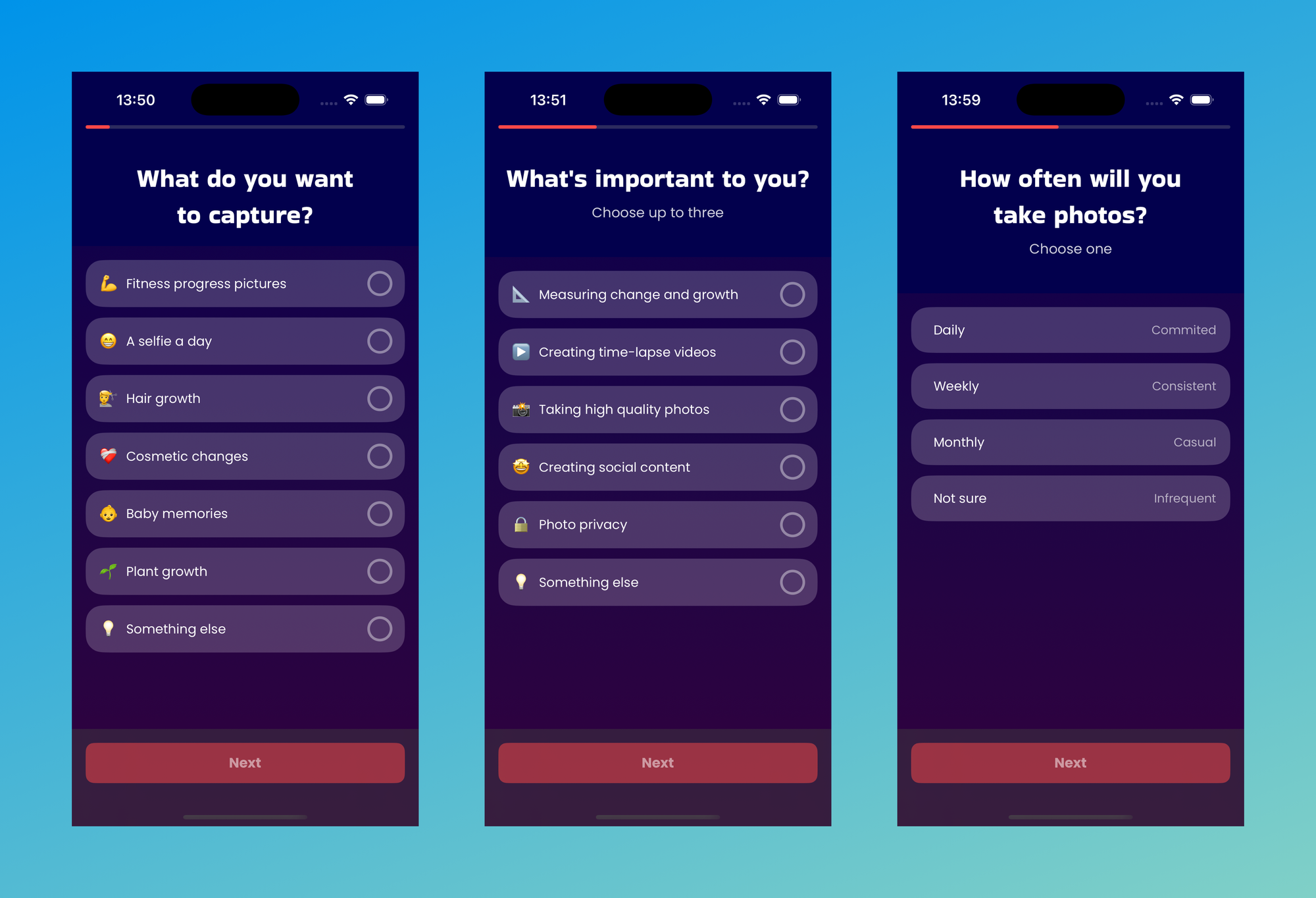Your MVP Isn’t Your App – It’s Your Onboarding
The real purpose of an MVP is learning, not showing. When it comes to mobile apps, what’s the best way to focus on learning rather than just showing? The answer might surprise you: Onboarding.

Ask ten different people what an MVP (minimum viable product) is, and you'll likely get ten different answers. The concept has evolved significantly since it was first coined in the early 2000s, and its meaning often depends on who you ask.
Lately, I’ve been working on onboarding for a new app, and at the same time, I've been reading The Launch Path, by Bret Waters. In the book, Bret gets to the heart of what an MVP is really about by clarifying that: "The real purpose of an MVP is learning, not showing."
That got me thinking – when it comes to mobile apps, what’s the best way to focus on learning rather than just showing?
The answer might surprise you: Onboarding.
Collecting Feedback Through Onboarding
One of the primary goals of an MVP is to validate your assumptions: Does your app idea truly resonate, and is there genuine value in what you're building or hoping to build? Onboarding provides a unique opportunity to validate these assumptions through direct user feedback immediately after a user downloads your app.
With PhotoJourney, I recognized that there were many distinct use-cases for an app that turns daily photos into progress time-lapse videos — such as tracking fitness progress, documenting plant growth or capturing baby growth milestones. Each use-case attracted a different type of user and had different problems to solve.
Rather than waiting to see how these user groups would engage with the app, I asked users directly during onboarding what they intended to use the app for and which features mattered most to them. As I found out, measuring incremental changes was most important for users tracking fitness progress, whereas creating beautiful time-lapse videos was more essential for users documenting baby growth milestones.
By strategically asking questions during onboarding, you gain invaluable insights into user motivations, expectations, and specific needs — even if your app doesn’t currently support all the features they are asking for yet.

Onboarding Is Where 80% Of Free Trial Starts Happen
According to RevenueCat's State of Subscription Apps 2025, 80% of free trial starts occur during day one of using your app. If your onboarding doesn't effectively communicate the value of your app leading up to this critical moment – showing the very first paywall – you're leaving significant revenue on the table.
The paywall acts as the ultimate test for your app’s value proposition. If users convert at this point, it clearly indicates that your onboarding resonated strongly with their needs, demonstrating genuine interest and perceived value in your app's offering.
Additionally, if you're collecting feedback on WHY users are downloading your app and WHAT they most want from it, you can combine this data with your conversion data. This allows you to identify the specific type of user most likely to convert—these users genuinely value your product (or at least its concept) enough to transact.
You might see many users requesting a particular feature or use case, but if they're not converting or even starting free trials after requesting this feature in onboarding, it likely holds less true value (to them and your app) than their feedback suggests.
Adjusting Your Value Proposition Based On Real-Time Responses
Effective onboarding not only drives immediate conversions but also enables you to dynamically adjust your messaging in real-time based on user responses. This personalized approach significantly enhances your value proposition.
For PhotoJourney, this meant ensuring my messaging wasn't generic. Given the many possible use-cases, I tailored onboarding screenshots and demo videos to match the specific use-case the user selected early in the flow. Users looking to track fitness progress saw fitness-related imagery, while those interested in plant growth saw plant-focused content. This not only made the app more appealing to users but also provided a clearer signal at the paywall about which type of users were most likely to pay for the solution, helping me focus on building a profitable app business.

My experience with PhotoJourney also illustrated the power of detailed, tailored onboarding. Initially, friends giving feedback on the app thought the onboarding process was too lengthy at 15+ screens, but real-world data showed less than 10% drop-off vs. having no onboarding, whilst also boosting overall conversion rates. Users genuinely seeking solutions weren't deterred; they valued the app more when the onboarding was specifically tailored to their needs.
Designing Your Onboarding Solidifies Your Value Proposition
Before building any app, I always perform a value proposition exercise to clearly define user needs and potential solutions. Onboarding directly links this theoretical exercise to real-world user validation, forcing you to think critically about what your customers genuinely value and would pay for.
If you find yourself struggling with how to clearly communicate your app’s value during onboarding, that’s a strong signal you may not yet fully understand your core value proposition. Conversely, if you find yourself positioning the app as doing everything for everyone then it's a sign your message might be diluted and not really focused on the users who will value your app the most.
Thoughtfully designing onboarding screens, and the messaging included in them, helps you stay focused on building core features that are validated by actual user feedback, ensuring efficient and profitable app development.
Conclusion
Onboarding is critical to mobile app success — not only as a proven revenue driver but as a powerful tool for early user feedback, assumption validation, and deepening your understanding of what your customers truly value.
Clearly communicating your value proposition through onboarding — and observing how different users respond and convert — enables easier, quicker and more cost-effective insights than waiting to see how users interact with the features in your app.